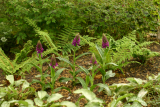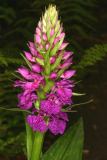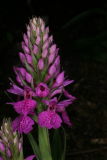Additional notes (click to expand)
Other use
Dactylorhiza foliosa (Rchb.f.)Soo Orchidaceae Distribution: Madeira. Roots look like a hand and Coles (1657) in 'Adam in Eden' calls them Palma Christi sive [or] Satyrion (to distinguish it from Ricinus communis which he calls Palma Christi sive Ricinus. This plant would be the closest to his Male Satyrion Royal, with purple flowers (but this is likely to be one of the English Marsh orchids,, and Dactylorhiza fuchsii is his Female Satyrion. In common with Orchis he writes 'The full and plump roots of the Satyrium or Orchis, whereof the Electuary Diasatyrium is made, are of mighty efficacy to provoke to venery, which they that have bulbous roots [meaning the testicle shaped roots of Orchis] do by Signature.'. Terrestrial orchids continue to be harvested by the millions annually in the Middle East for the production of Salep, including Salep ice cream, because of their mythological aphrodisiacal property.
Oakeley, Dr. Henry F. (2013). Wellcome Library notes.
link
Coles (1657) in 'Adam in Eden'.
Coles, William. (1657). Adam in Eden or Nature's Paradise. The History of Plants. London. J. Streeter for Nathaniel Brooke .
Historical Note: ‘... not so available for venereous purposes .. fresh flowers fryed with egges into a Tansie [an omelette] and so eaten stay the bloody fluxe [heavy periods] in a speedy manner.’
Parkinson, John (1640) 'Theatrum Botanicum' London, Thomas Cotes
Geographical distribution
- Africa, Macaronesia, Madeira
Dactylorhiza foliosa (Soland. ex Lowe) Soó
Family: ORCHIDACEAEGenus: Dactylorhiza
Species: foliosa (Soland. ex Lowe) Soó
Common names: Leafy Orchid; Madeira Orchid
Distribution summary: Madeira
Habit: Perennial
Hardiness: H5 - Hardy; cold winter
Habitat: damp rocky slopes in woodland glades at high altitudes
Garden status: Not currently grown
Flowering months: May, June




